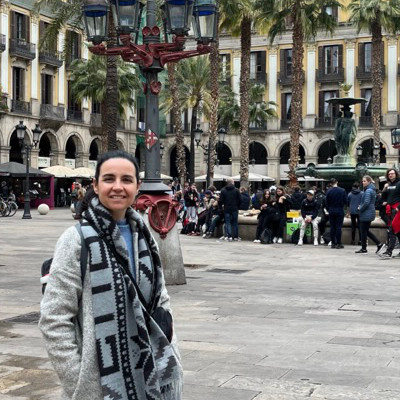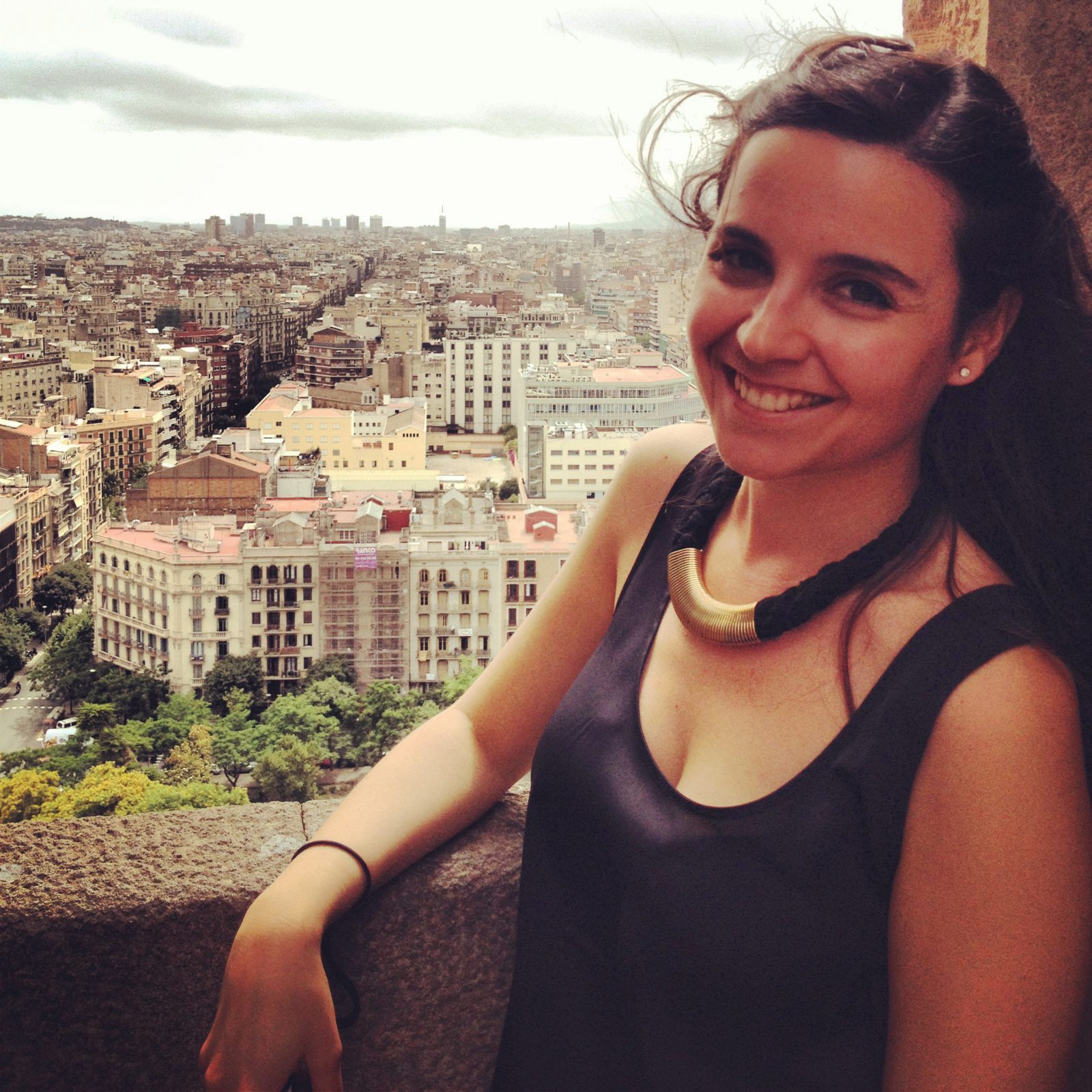Plaça Reial, alongside Plaça Catalunya, is one of the most famous squares in Barcelona and one of the most beautiful. It’s no wonder that it’s a favorite spot in Barcelona for many, including Johan Cruijff. Surrounded by arches and passageways housing numerous restaurants and bars, Plaça Reial invites all passersby to sit for a while and enjoy the city while savoring a tapa or two. Plaça Reial is also known for its vibrant nightlife.
What to See and Do at Plaça Reial
The beautiful Plaça Reial, known for its lovely arcades, palm trees, and many cozy terraces, is bustling both during the day and at night. It’s a staple part of the tourist route for many visitors exploring the Gothic Quarter and the nearby Las Ramblas.

Architecture of Plaça Reial
Plaça Reial is one of the few enclosed squares in Barcelona. The architect Francesc Daniel Molina designed this charming square with French flair. The buildings surrounding Plaça Reial are all from the 19th century and have a uniform appearance: they are three stories high, beautifully decorated (with arches and balustrades), and painted in yellow hues. The most striking feature is, of course, the arcade gallery with volta catalana (Catalan arch) that runs along all four sides.
Among all the buildings on Plaça Reial, number 10 certainly deserves attention: it has been the address of many famous individuals, such as philosopher Francesc Pujols, painter, activist, and defender of freedom during Spain’s transition in the 1970s: José Pérez Ocaña, and singer-songwriter Lluís Llach. The Fundació Setba currently owns this property and occasionally offers interesting tours.
Other architectural gems in the square include the Font de les Tres Gràcies fountain by architect Antoni Rovira i Trias, inspired by Rubens’ Three Graces, and the two modernist street lamps by a young Antoni Gaudí.
Gaudí at Plaça Reial
The two modernist lampposts that adorn the square were among the first works by Gaudí for Barcelona. Gaudí designed these lampposts in 1878, when he was just 26 years old.
The city council commissioned him to design a new model for a gas streetlamp. These symbolized the first urban renewal projects in Barcelona in the 19th century. These lamps were intended to be installed throughout the city. Unfortunately, only a few were made: the two on Plaça Reial and three at Pla de Palau.
Gaudí’s street lamps have a dark marble base and six arms for six light points. The lantern is topped with two coiled snakes on a stick and a winged helmet, symbols of Mercury, the deity of trade protection, as this was a very characteristic activity of Barcelona. The coat of arms of Barcelona is also visible here.

Passatge de Madoz
The various entrances leading to the square also deserve your attention. They are each highly photogenic spots. Be sure not to miss Passatge de Madoz, filled with shops and terraces.

Passatge de Bacardí
Another passage towards Plaça Reial, but not as well known, is Passatge de Bacardí.
Passatge de Bacardí bears the name of the then-owners of these grounds, the Bacardí family. The ceiling is made of glass and was formerly adorned with paintings of tropical and exotic landscapes.
Interesting to note is that this was Barcelona’s first covered passage. The passage became a small shopping center for the affluent, hence the images of the god Hermes, protector of shops and commercial transactions.
The passage is now closed with a gate and not always open to visitors, but it’s definitely worth a look if you’re in the area. A secret spot most tourists visiting the square don’t know about!

Herboristeria del Rei
Don’t forget to visit Herboristeria del Rei (Carrer del Vidre, 1) during your visit to Plaça Reial: it is the first herbal shop in Catalonia and one of the oldest shops in Spain.
Opened in 1818, the shop still looks as it did back then and is filled with all sorts of medicinal plants, cooking herbs, natural medicines, cosmetics, and essential oils.
Also interesting to know: this old-fashioned herbal shop was featured in the film “Perfume” and was also the supplier of medicines for Queen Isabel II.

Coin and Stamp Market at Plaça Reial
Every Sunday morning, a charming coin and stamp market for collectors is held here, known as Mercat de Numismàtica i Filatèlia de la Plaça Reial. It takes place between 9:00 AM and 2:30 PM.
Dining at Plaça Reial
Under the beautiful arches of Plaça Reial, you’ll find many cozy terraces to relax. The restaurant Les Quinze Nits is one of the most popular. You often see long lines of people waiting here. But my favorite terrace at Plaça Reial is undoubtedly that of Ocaña, which transforms into a lively bar for lounging in the evening.
If you’re with kids, the Italian restaurant Rossini is more recommendable (it offers a children’s menu, high chairs, and changing facilities).
In an alley next to Plaça Reial, you’ll also find the restaurant La Crema Canela (Passatge Madoz, 6). In my opinion, the ideal location for a romantic dinner!
And finally, don’t forget to check out the famous rotisserie chickens at the nearby Restaurant Los Caracoles (Carrer dels Escudellers, 14).

Nightlife at Plaça Reial
Plaça Reial is also a well-known nightlife area in Barcelona. Here you’ll find famous clubs like Jamboree and Sidecar, as well as fun pubs like Pipa Club.
My favorite spot at Plaça Reial for a drink and a stylish dance is Ocaña. In addition to its cozy terrace and stunning restaurant area, Ocaña also has a basement that serves as a lounge club and disco at night. It’s a bit of New York and Berlin meets Barcelona. The hip and relaxed vibe, along with the occasional live music sessions, make it well worth a visit.
History of Plaça Reial
Plaça Reial was created as a result of the ecclesiastical confiscation by Mendizábal in 1835. The Capuchin monastery (Convent dels Caputxins de Santa Madrona), which had stood at this location since 1718, was demolished and replaced by, among other things, a large theater and the first glazed galleries in Europe.
Construction of the square, Plaça Reial, began in 1848 under the leadership of architect Francesc Daniel Molina. This luxurious square, inspired by the 17th-century neoclassical French squares, was intended to honor the royal house. It was originally planned to be named Plaça dels Reis Catòlics and to feature a sculpture of King Ferran VII in the center. However, due to negative reactions, this did not happen. Instead, the square was named ‘Plaça Reial’ (which still means ‘the Royal Square’), and the elegant fountain and two street lamps by Gaudí from 1879 were placed.
The noble buildings on the square were homes to some of the most important families in the city. This luxurious square later became more bohemian with the arrival of cafes and somewhat unique characters who worked and lived here. A famous taxidermist was located on the square (there’s still a sign reading “Museo pedagógico de ciencias naturales”), as well as Spain’s first self-service restaurant; Restaurante Tobogán. The shoeshiner Fructuós Canonge, who later became world-famous as a magician, began his career here by shining shoes and attracting customers’ attention by spreading bread with shoe polish and eating it. A plaque on the square reading ‘Limpiabotas Canonge’ reminds us of this.
In 1890, Plaça Reial was lit with electricity for the first time, making it one of the first places in Barcelona with artificial light.
Between 1982 and 1984, the square was renovated by architects Frederic de Correa and Alfons Milà. Plaça Reial was made more pedestrian-friendly, and palm trees were planted.
Today, Plaça Reial still buzzes with energy. It’s a vibrant place filled with numerous restaurants, bars, and terraces, transforming into a large nightlife area as evening falls. On weekends, a traditional coin and stamp market is still held for enthusiasts.
How to Get to Plaça Reial
Plaça Reial is located in the Gothic Quarter, next to the Ramblas and very close to Plaça Sant Jaume. It can be easily reached from the Liceu metro station (L3).
Useful information
Price: Free.
Opening Hours: Not applicable.
Address: Plaça Reial 08002 Barcelona
Public Transportation:
Metro: Liceu (L3)
Bus: 59, N9, N12, N15, V13


